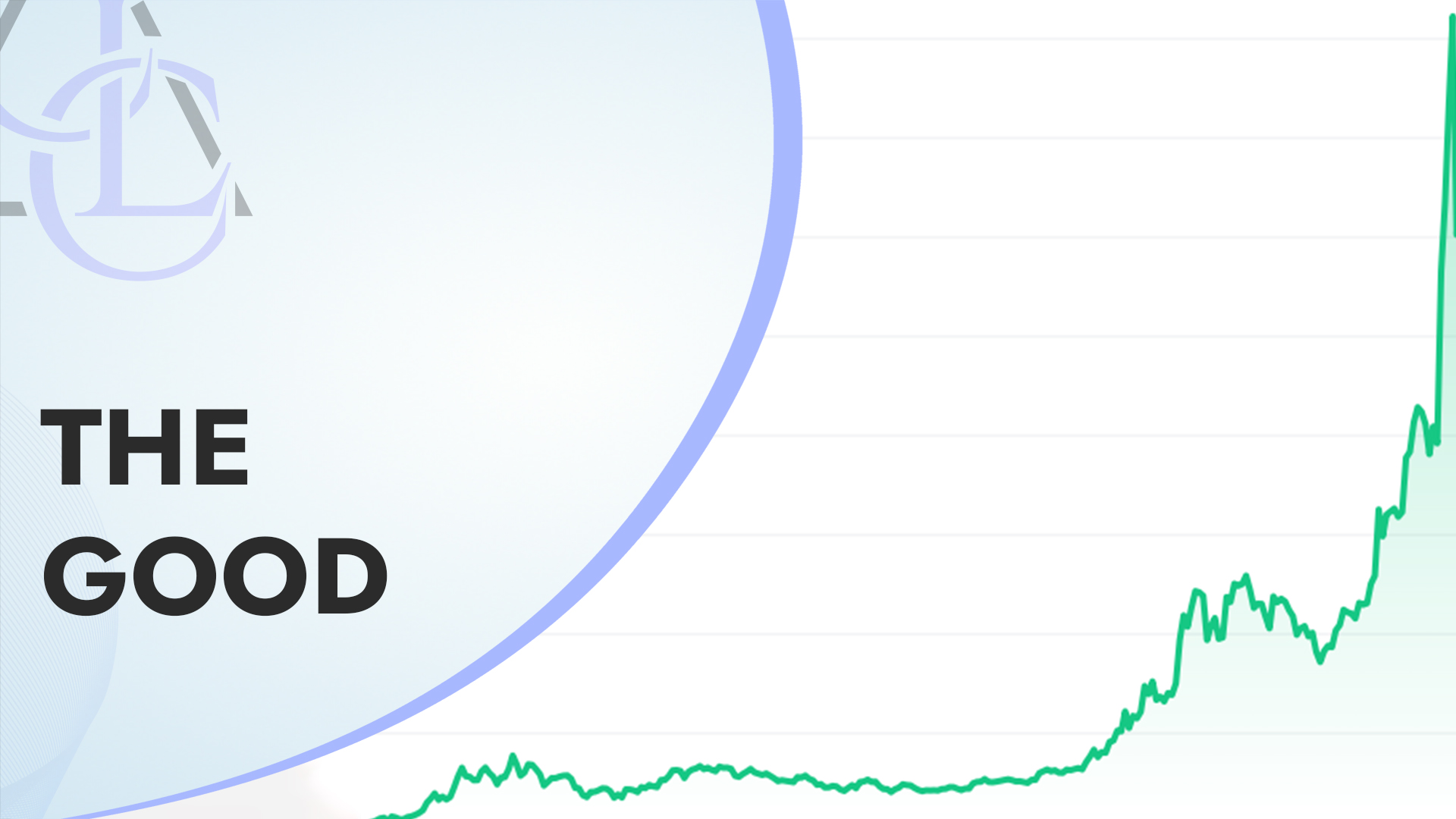Introduction
In the rapidly transforming landscape of cryptocurrency, meme coins – a phenomenon that began with the introduction of Dogecoin (DOGE) – have seen their hype reignited and amplified. As they take center stage in the crypto arena, these coins are luring a diverse array of investors with their alluring novelty and potential for substantial returns.
In this article, we will delve into the multifaceted world of meme coins, examining the benefits they offer, the risks they harbor, and the pressing issues they bring to the forefront of the cryptocurrency market. Amidst the buzz and speculation, we aim to provide an insightful and balanced analysis of this emerging trend in the crypto universe.
The Good
Meme coins can serve as potentially lucrative investments, yielding significant profits for savvy investors who strategically navigate the market. In some cases, sheer luck plays a role, with certain investors stumbling upon these digital assets at the right time and gaining substantial rewards. However, this dynamic of meme coins can also quickly turn into a disadvantage.
In addition, meme coins have undeniably attracted a vast number of newcomers to the cryptocurrency domain. Their potential for significant profits, combined with their pop culture appeal, fuels their popularity. For example, PEPE was launched in April 2023, and has grown rapidly, reaching a market cap of over $1.6 billion just a few weeks after its launch.
The Bad
- PEPE skyrocketed 5415% to its All-Time High (ATH) from the lowest price point, only to plummet 73% within the following week.
- SHIBA follows a similar pattern, with an explosive growth of 1200% leading to its ATH in a few weeks and a steep decline of 80% the following months.
The Fraud Problem
Alexander Wermescher, our Founder and CEO at CLC & Partners, defines meme coins as falling into one of three categories:
- Meme coins based on internet memes, like DOGE and SHIB.
- Celebrity coins leveraging fame.
- Pump-and-dump schemes involving artificial value inflation for profit.

- Pump and dump schemes: These involve artificially inflating the price of a cryptocurrency (the “pump”) by spreading hype and misinformation, then selling off once the price is high (the “dump”), which results in the price crashing and other investors losing money.
- Scam coins or tokens: Some people create new meme coins with no real value or use case, hype them up, and then disappear once they’ve made a profit, leaving investors with worthless tokens.
- Market manipulation: This could involve a variety of tactics, such as wash trading (where the same entity buys and sells a coin to create the illusion of activity) or whale manipulation (where a large holder of a coin makes significant moves to manipulate the price).
- Rug pulls: This is when developers of a cryptocurrency project suddenly withdraw all of their funds from the liquidity pool, causing the value of the cryptocurrency to drop to zero and leaving investors with no way to sell their holdings.
- Fake exchanges or wallets: These websites or apps look like legitimate places to buy, sell, or store cryptocurrency but are scams designed to steal your coins.

The Fraud Solution
Regulatory oversight stands as the primary defense against fraudulent activities in the meme coin space, calling for global bodies to create and enforce comprehensive rules that protect investors and deter fraud.
On the investor’s end, education is the key. Ensuring a clear understanding of the mechanics of cryptocurrencies and their markets can help investors spot potential scams, making educational resources and platforms for cryptocurrency literacy indispensable.
Community vigilance also plays a pivotal role in tackling fraud, with online platforms and forums acting as spaces to share information about potential scams and collective scrutiny serving as a deterrent against malpractice.
Lastly, investors should practice stringent risk management techniques when investing in meme coins or any form of investment. This includes only investing what they can afford to lose, diversifying their portfolio, and not succumbing to the fear of missing out (FOMO).
The Trust Problem
Furthermore, meme coins also serve as a double-edged sword, posing risks not only to investors but also to the cryptocurrency ecosystem at large. They could tarnish the credibility of the broader crypto ecosystem and distract from more substantial blockchain innovations. As they are often viewed as a quick route to wealth, they can divert attention from blockchain technology’s actual value and potential.
The Trust Solution
The primary purpose of blockchain and cryptocurrencies is decentralization and democratizing the financial system, not to offer a rapid road to riches. The real value lies in their utility and intrinsic value, and investing in them should be a mindful exercise, not a speculative gamble. While the allure of quick profits from meme coins can attract newcomers to the crypto arena, it’s crucial that they grasp the intrinsic risks and the fundamental principles that underpin blockchain technology.
At CLC & Partners, we accept this as our duty. Our commitment extends beyond business guidance to also providing educational resources for individuals. The pillars of CLC & Partners are rooted in education, transparency, and ethics. We urge investors to be vigilant, conduct thorough research, and fully understand their investments while remaining mindful of potential market manipulations.
The Congestion Problem
Meme coins like PEPE which have transitioned to the BRC-20 standard due to Ethereum’s congestion, have impacted both the Ethereum and Bitcoin networks. The increased activity of meme coins on Bitcoin’s BRC-20 standard has led to network congestion and higher transaction fees.
BRC-20 tokens compete for block space and drive-up fees. Unlike traditional non-fungible tokens (NFTs), BRC-20 tokens store all their data directly on-chain, making them larger in size. This contributes to increased competition for block space, leading to higher transaction fees and longer waiting times in the mempool for users seeking faster confirmation times.
The Congestion Solution
This situation can potentially be mitigated through several strategies:
- Implementing new standards: Introducing new token standards, such as the proposed BRC-21 for Bitcoin, could help reduce congestion. This would allow tokens on other chains to be minted and redeemed on the Bitcoin blockchain, effectively spreading the load.
- Optimizing existing standards: Optimization of existing token standards, such as Bitcoin’s BRC-20 or Ethereum’s ERC-20, to improve their efficiency and lower the impact of token transactions on network congestion.
- Layer-2 solutions: Layer-2 solutions, like Bitcoin’s Lightning Network or Ethereum’s Plasma, can handle transactions off the main chain and reduce congestion. They can allow for faster transaction speeds and lower fees.
- Sharding: Ethereum 2.0’s plan includes a technique called sharding, which splits the network into smaller pieces (shards), each capable of processing its own transactions and smart contracts. This could increase the network’s capacity to manage more transactions and reduce congestion.
- Forking the chain: If users, nodes, and miners come to a consensus that Bitcoin should be forked to prevent further spam, then this would be a formal and correct way to do it.
All in all, these problems are not inevitable, and there are always solutions. They involve technical complexities and trade-offs, and their implementation requires careful consideration and community consensus.
While applicable to other issues, these solutions shouldn’t be hastily implemented but rather deployed thoughtfully and at a measured pace. The future of blockchain is bright, and it will continue to evolve in a way that balances both the thrill of innovation and the stability of sound financial practices. As we navigate these complexities, our collective efforts will drive us toward a more secure, efficient, and decentralized future.
Conclusion
While there are apparent benefits of meme coins, the disadvantages are notable. The key to mitigating these risks is through education, transparency, and responsible investing. It is essential for investors to understand the risks, conduct due diligence before investing, and avoid getting swept up in the hype.
At CLC & Partners, we accept this as our duty. Our commitment extends beyond business guidance to also providing educational resources for individuals. We firmly believe that the pillars of consultancy are rooted in education, transparency, and ethics, and we embrace these as our core values. As we navigate the complexities of the cryptocurrency landscape, we remain committed to driving forward a more secure, efficient, and decentralized future for all.
We strongly advise our audience to seek knowledge, engage in comprehensive research, and understand what they’re investing in while remaining alert to potential market manipulations.
Be a part of the solution, stay tuned for more comprehensive articles and join forces with us in building a responsible Web3 market. Contact us today to learn more about how CLC & Partners can support your business’s Web3 journey.





